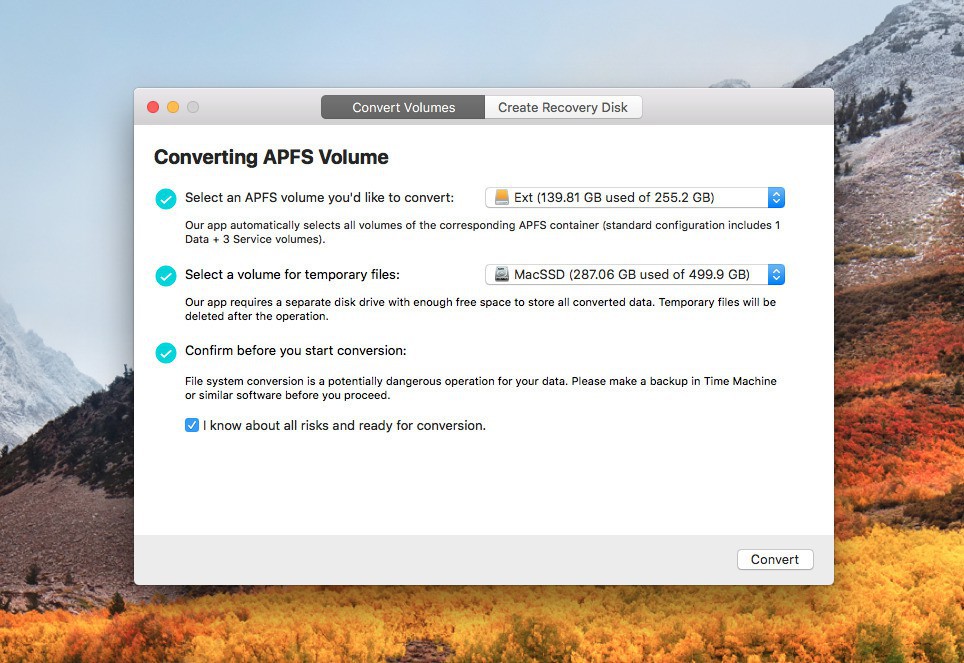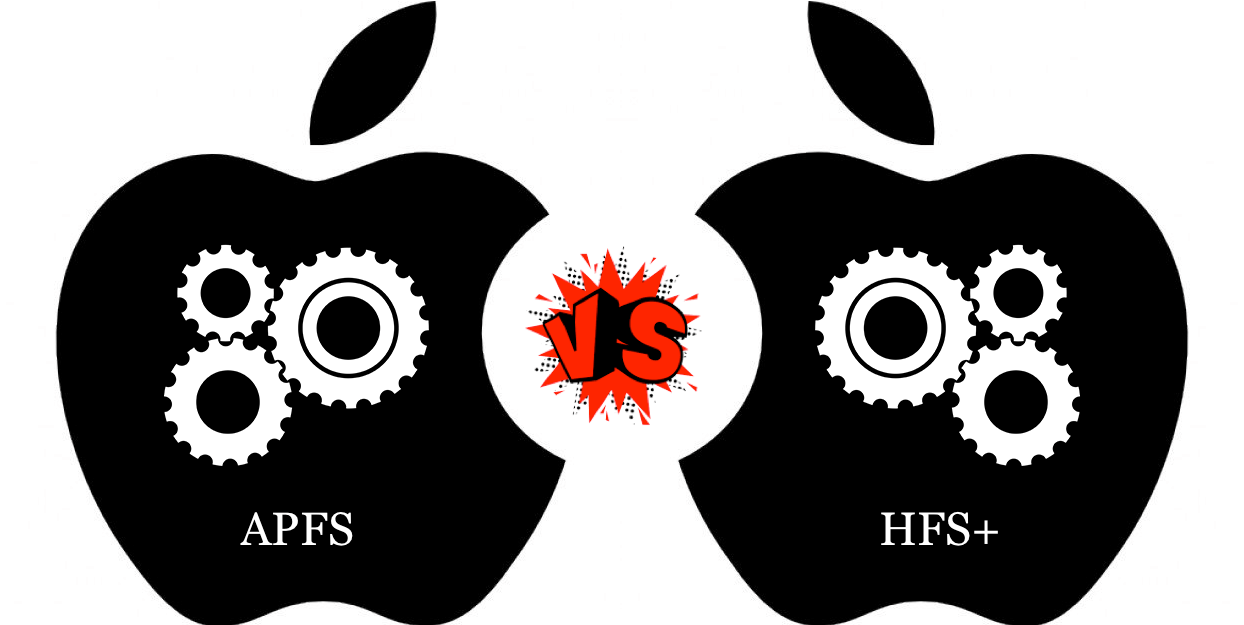Apple’s new APFS (Apple File System) format is the default format for storage under macOS 10.14 Mojave, replacing the dependable and long-lived HFS+ format. However, there are still some instances where HFS+ needs to be used. How to revert/convert/downgrade APFS to HFS/HFS+ without data loss? Still good as a reminder since converting a Time Machine drive to APFS very nicely destroys the LINKs that Time Machine uses to store file data. I might also add that if you're a user of CCC or SD for cloning, that you likewise should not convert those drives to APFS. A Time Machine HFS+ volume is rendered effectively useless whe converted to APFS. Because APFS lacks hard link support, converting an HFS+ volume to APFS destroys those links and replaces them with. Wait a few minutes until the conversion process is finished and a green check mark will appear. Click the Done button. That’s it, you’re done. Now the hard drive is formatted in the APFS, which we can verify by the inscription “APFS Volume APFS” instead of “USB External Physical Volume Mac OS Extended (Journaled. APFS has improved a lot in space management and file security, thus becomes the best choice for Mac users. However, many users have no idea how to convert HFS+ to APFS if their drives haven't been converted automatically while updating to macOS Catalina Big.
Disk Utility User Guide
Convert Hfs To Apfs

You can convert the image format and encryption of a disk image.
For example, if you create a read/write disk image but later want to prevent changes to the image, you can convert it to one of the read-only disk image formats.
In the Disk Utility app on your Mac, choose Images > Convert, select the disk image file you want to convert, then click Open.
Click the Image Format pop-up menu, then choose a new image format.
Read-only: The disk image can’t be written to, and is quicker to create and open.
Compressed: Compresses data, so the disk image is smaller than the original data. The disk image is read-only.
Read/write: Allows you to add files to the disk image after it’s created.
DVD/CD master: Can be used with third-party apps. It includes a copy of all sectors of the disk image, whether they’re used or not. When you use a master disk image to create other DVDs or CDs, all data is copied exactly.
Hybrid image (HFS+/ISO/UDF): This disk image is a combination of disk image formats and can be used with different file system standards, such as HFS, ISO, and UDF.
If you want to change the encryption, click the Encryption pop-up menu, then choose an encryption type.
Enter a new name for the image in the Save As field, click Save, then click Done.


Convert Hard Drive To Apfs


